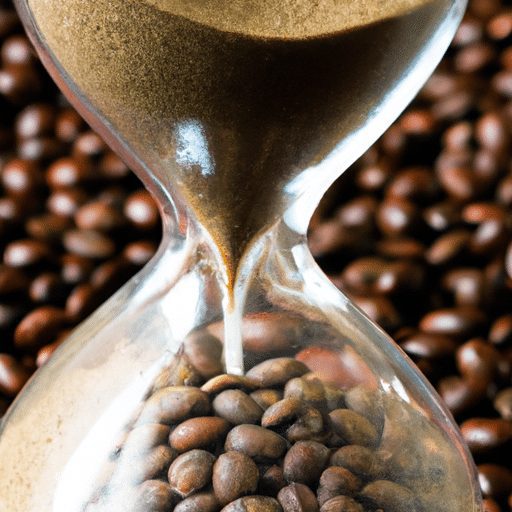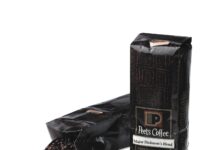Imagine waking up to the rich aroma of freshly brewed coffee filling your kitchen. The invigorating scent draws you in, giving you a hint of the bold flavor that awaits. But what if you reach for your pantry, only to find a long-forgotten bag of ground coffee that’s been hiding for two years? Is it still good? In this article, we explore the intriguing question of whether 2-year-old ground coffee can still deliver that satisfying cup of joe we all crave. So, grab your favorite mug, settle in, and let’s find out if time has been kind to this forgotten stash of coffee grounds.
What is ground coffee?
Definition of ground coffee
Ground coffee refers to coffee beans that have been transformed into a fine, powdery form by grinding. This process exposes a larger surface area of the coffee beans, enhancing the extraction of flavor and aroma when brewed. Ground coffee is commonly used for making coffee with various brewing methods, such as drip brewing, French press, and espresso.
How is ground coffee made?
Ground coffee is made by grinding roasted coffee beans using a coffee grinder. The grinding process can vary in terms of fineness, depending on the intended brewing method. Coarser grounds are typically used for methods like French press, while finer grounds are preferred for methods like espresso.
Why is ground coffee popular?
Ground coffee is popular due to its convenience and versatility. It eliminates the need for individuals to grind their own coffee beans, saving time and effort. Additionally, ground coffee allows for consistent brewing results, as the grind size can be customized to suit different brewing methods. The availability of pre-ground coffee in stores and online also contributes to its popularity among coffee enthusiasts.
Factors Affecting Coffee Shelf Life
Oxygen exposure
One of the primary factors that can affect the shelf life of ground coffee is oxygen exposure. Oxygen can cause the coffee to oxidize, leading to a loss of flavor and aroma over time. It is crucial to store ground coffee in airtight containers to minimize oxygen contact and preserve its freshness.
Moisture content
Moisture is another factor that can impact the shelf life of ground coffee. Excessive moisture can cause the coffee to degrade, leading to the growth of mold and the loss of desirable flavors. It is important to store ground coffee in a dry environment, away from sources of moisture, such as open windows or humid areas.
Storage conditions
The storage conditions also play a significant role in determining the shelf life of ground coffee. Factors such as temperature, light exposure, and humidity can influence the coffee’s quality and longevity. It is advisable to store ground coffee in a cool, dark place to maintain its freshness for a longer period.
Bean quality
The quality of the coffee beans used to make the ground coffee can also affect its shelf life. High-quality beans tend to retain their flavor and aroma for a longer time compared to lower-quality beans. It is essential to choose freshly roasted beans from reputable sources to ensure the best possible shelf life for the ground coffee.
Understanding Coffee Aging
Chemical changes during aging
As ground coffee ages, certain chemical changes occur that can impact its flavor and aroma. The most notable change is the oxidation of the coffee’s compounds, which can result in a decrease in freshness and intensity of flavors. The degradation of volatile compounds also contributes to the changes in the aroma profile of aged coffee.
Effect on flavor and aroma
The aging process of ground coffee can significantly alter its flavor and aroma. Over time, the coffee may develop a more muted, stale taste, as the volatile oils responsible for its unique flavors dissipate. The aroma may also become less vibrant and less pronounced compared to freshly ground coffee.
Color changes
Another visible effect of coffee aging is the change in color. As ground coffee ages, it tends to lose its vibrant, dark color and may become lighter or duller in appearance. This change in color can serve as a visual indicator of the coffee’s age and potential loss of quality.
Determining the Shelf Life of Ground Coffee
Best before date vs. expiration date
When it comes to determining the shelf life of ground coffee, it is important to understand the difference between the “best before” date and the expiration date. The “best before” date indicates the period during which the coffee is expected to retain its peak quality and freshness. However, it is still safe to consume the coffee after this date, although the flavors and aromas may have degraded to some extent. The expiration date, on the other hand, indicates that the coffee should not be consumed after that specific date due to potential health risks.
Storage recommendations
To maximize the shelf life of ground coffee, it is crucial to store it properly. The coffee should be stored in an airtight container, away from direct sunlight, heat, and moisture. It is also advisable to keep the coffee in a cool, dark place, such as a pantry or cupboard.
Quality indicators to look for
When assessing the shelf life of ground coffee, there are a few key quality indicators to consider. These include the aroma, taste, and appearance of the coffee. If the coffee has a noticeably stale or unpleasant smell, a muted or bitter taste, or if it appears significantly lighter in color, it may indicate that the coffee has surpassed its optimal shelf life.
Is 2-year-old Ground Coffee Safe to Consume?
Potential health risks
While 2-year-old ground coffee is unlikely to pose significant health risks, it is important to exercise caution when consuming coffee that has been aged for such a long period. The coffee may have a higher chance of contamination or the growth of mold or bacteria, which could potentially affect the safety of consumption.
Mold and bacteria growth
Over time, ground coffee can become a breeding ground for mold and bacteria, especially if it has been improperly stored or exposed to moisture. Consuming coffee that contains mold or bacteria can lead to adverse health effects, including allergic reactions or gastrointestinal issues. It is recommended to inspect the coffee thoroughly and discard it if any signs of mold or bacterial growth are present.
Effects on taste and quality
In terms of taste and quality, 2-year-old ground coffee is likely to have significantly deteriorated compared to freshly ground coffee. The flavors and aromas may have become stale, muted, or completely diminished. While it may still be consumable, it may not provide the enjoyable coffee experience that one would expect from freshly brewed coffee.
How to Assess the Quality of 2-year-old Ground Coffee
Color and appearance
When assessing the quality of 2-year-old ground coffee, the color and appearance can provide useful insights. If the coffee appears significantly lighter, duller, or has an uneven color distribution, it may indicate that the coffee has aged and may have lost some of its desirable qualities.
Aroma
The aroma of 2-year-old ground coffee can be an important factor in assessing its quality. If the coffee has a noticeably stale or unpleasant smell, it may indicate that the volatile compounds responsible for its aroma have degraded over time. A lack of distinct or vibrant aromas can be a sign of diminished freshness.
Taste
The taste of 2-year-old ground coffee can also provide insights into its quality. If the coffee tastes noticeably stale, bitter, or lacks the vibrant flavors typically associated with freshly brewed coffee, it may indicate that the coffee has experienced flavor degradation due to aging.
Proper Storage of Ground Coffee
The importance of airtight containers
Proper storage of ground coffee is essential to maintain its freshness and quality. Using an airtight container helps to minimize oxygen exposure, which can lead to oxidation and the loss of flavor and aroma. It is recommended to transfer the coffee to airtight containers immediately after opening the original packaging.
Avoiding moisture exposure
Moisture can greatly impact the quality and shelf life of ground coffee. It is crucial to store the coffee in a dry environment and avoid exposing it to moisture sources such as open windows or humid areas. Moisture can lead to the growth of mold and the degradation of the coffee’s flavors and aromas.
Keeping coffee away from sunlight and heat
Sunlight and heat can also negatively affect the quality and freshness of ground coffee. It is advisable to store the coffee in a place that is cool and dark, such as a pantry or cupboard. Avoiding exposure to direct sunlight and high temperatures helps to preserve the coffee’s flavors and aromas for a longer period.
Alternatives to Using 2-year-old Ground Coffee
Brewing methods for old coffee
If 2-year-old ground coffee is no longer appealing for brewing as a regular cup of coffee, there are alternative brewing methods that can be explored. One option is using the coffee grounds for cold brew, which involves steeping the grounds in cold water for an extended period. Another option is to use the grounds for making coffee-flavored desserts or for creating coffee-infused beverages.
Repurposing coffee grounds
Coffee grounds, whether fresh or aged, can be repurposed in various ways. They can be used as a natural fertilizer for plants or as an ingredient in homemade exfoliating scrubs. Coffee grounds can also help absorb odors in refrigerators or act as a natural pest repellent in gardens. Exploring these alternative uses can provide new ways to utilize aged coffee grounds effectively.
Conclusion
In conclusion, 2-year-old ground coffee may still be safe to consume, but its quality and taste may have significantly deteriorated. Factors such as oxidation, moisture exposure, storage conditions, and bean quality can all contribute to the aging process of coffee. When assessing the quality of aged coffee, considerations such as color, aroma, and taste play a vital role. Proper storage, avoiding moisture exposure, and using airtight containers are essential for preserving the freshness of ground coffee. If 2-year-old coffee is no longer enjoyable for brewing, alternative methods and repurposing options can be explored. Ultimately, personal preferences and individual taste will determine whether or not to consume 2-year-old ground coffee.




































